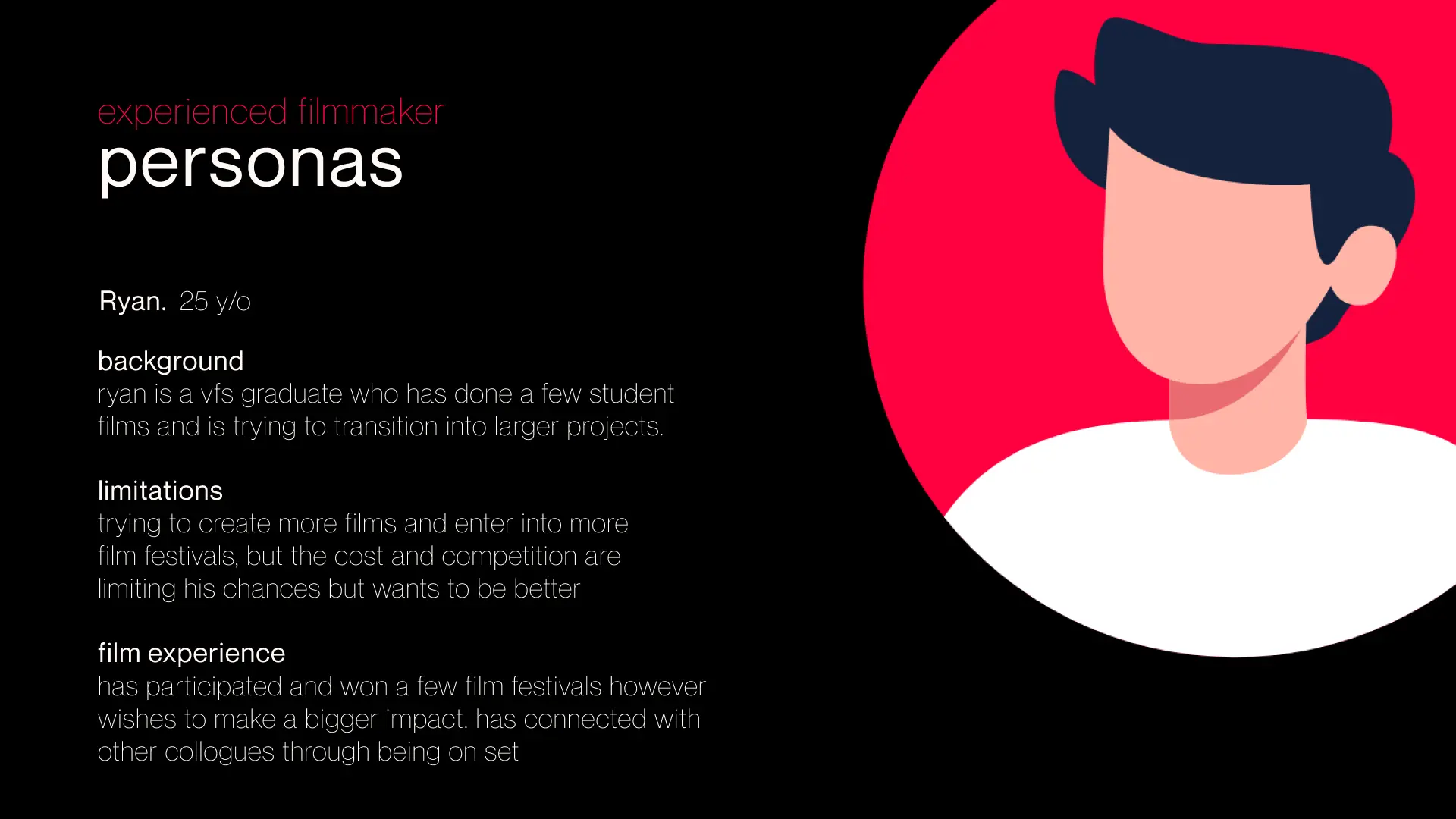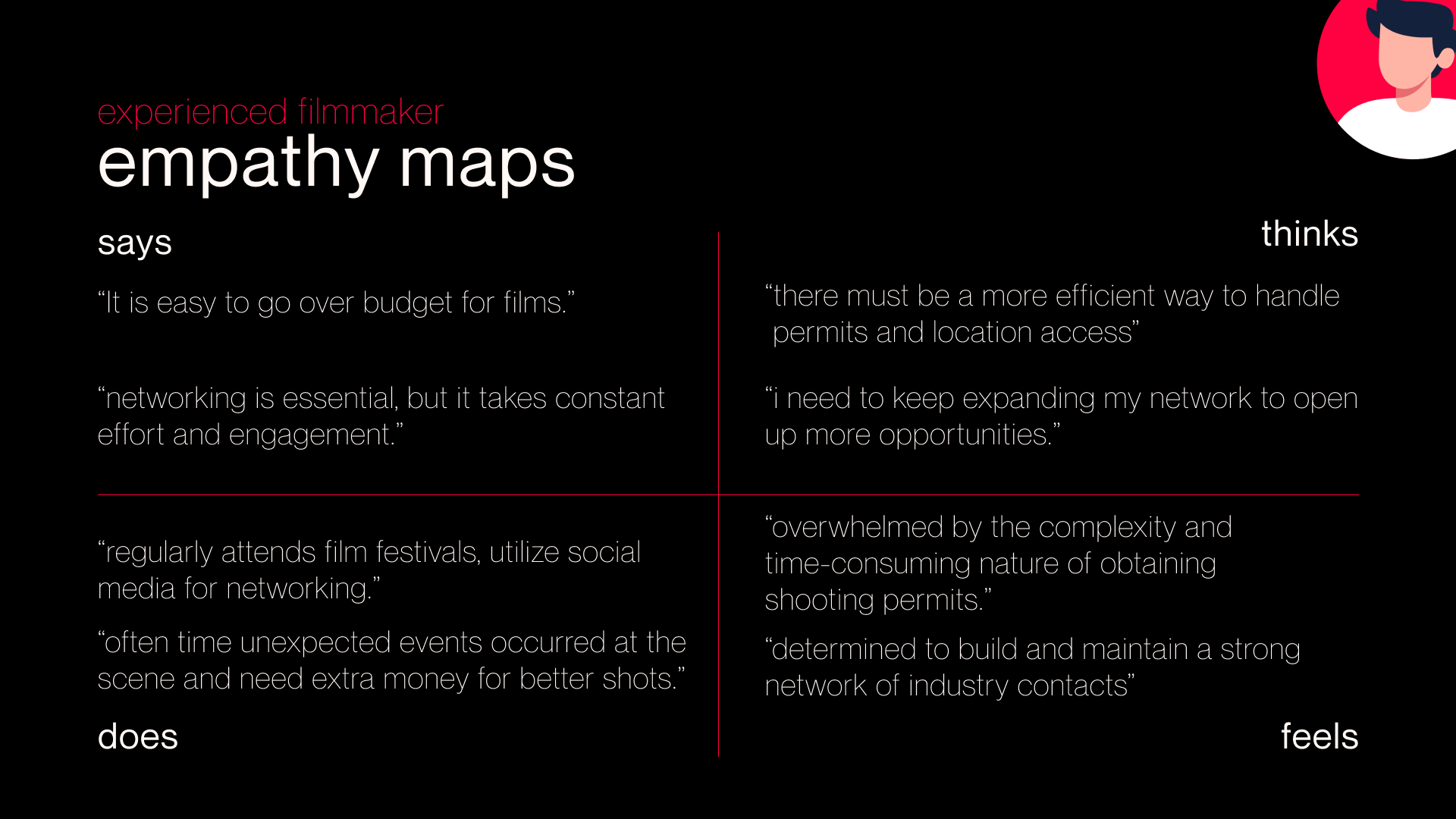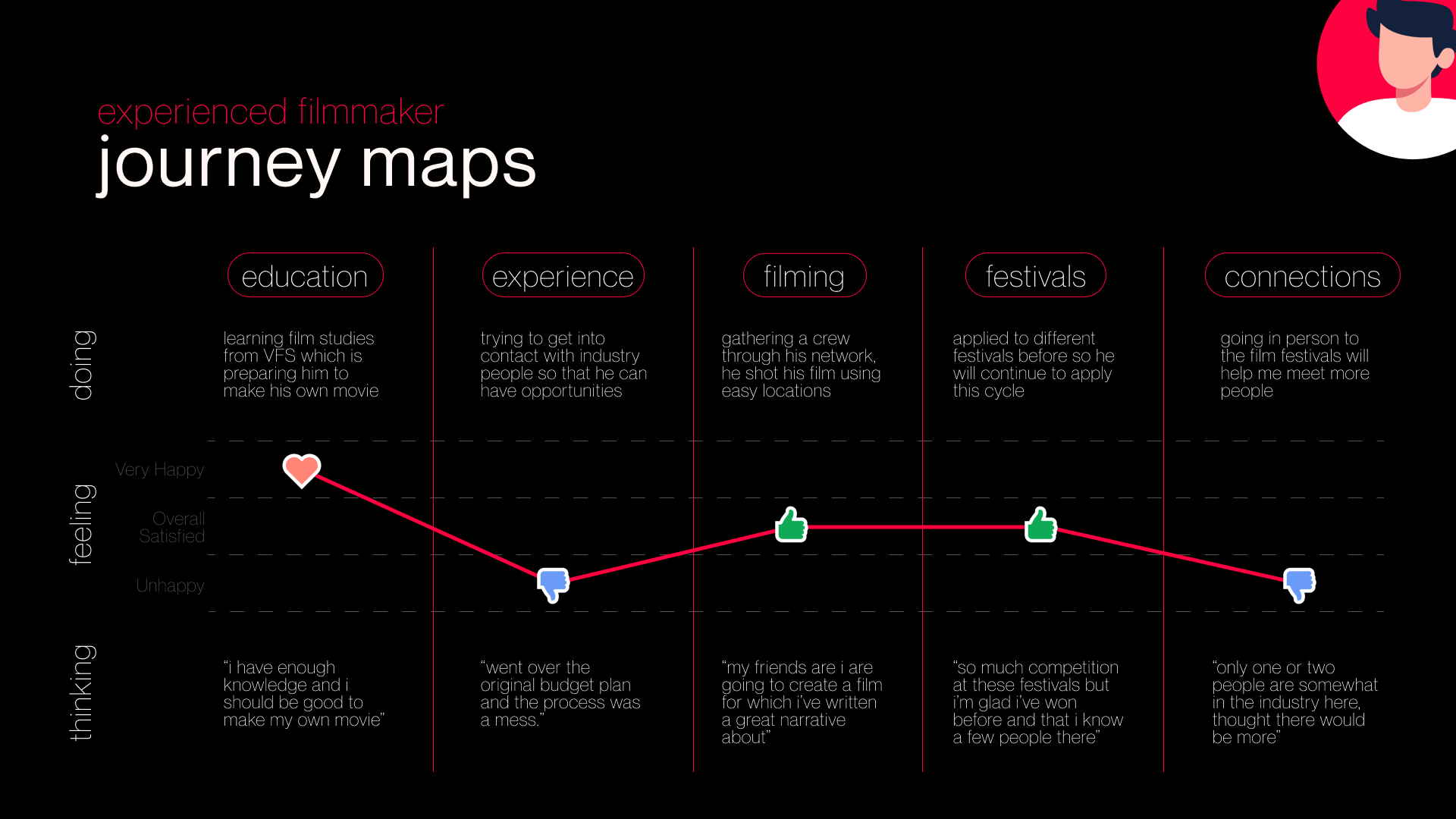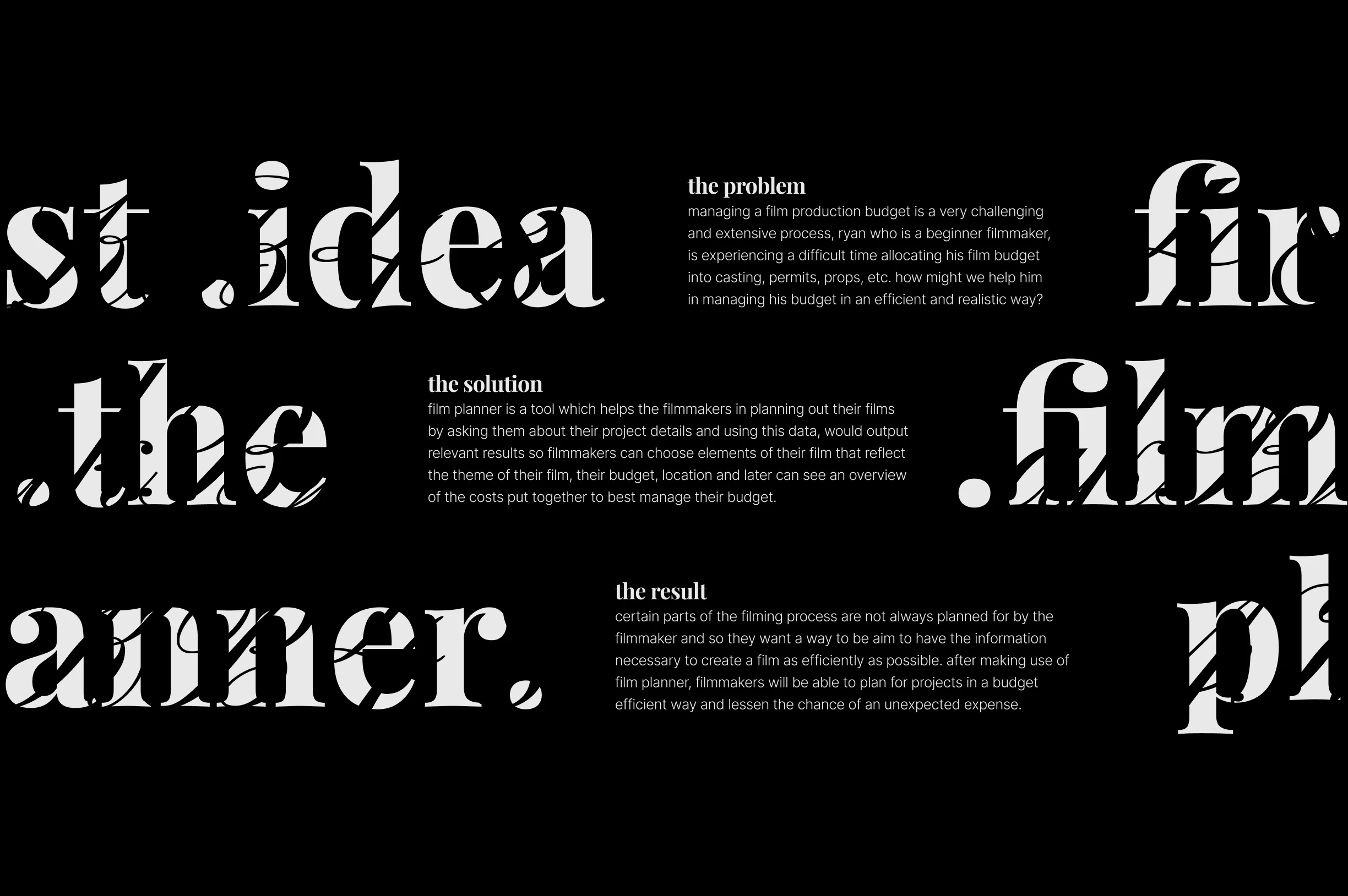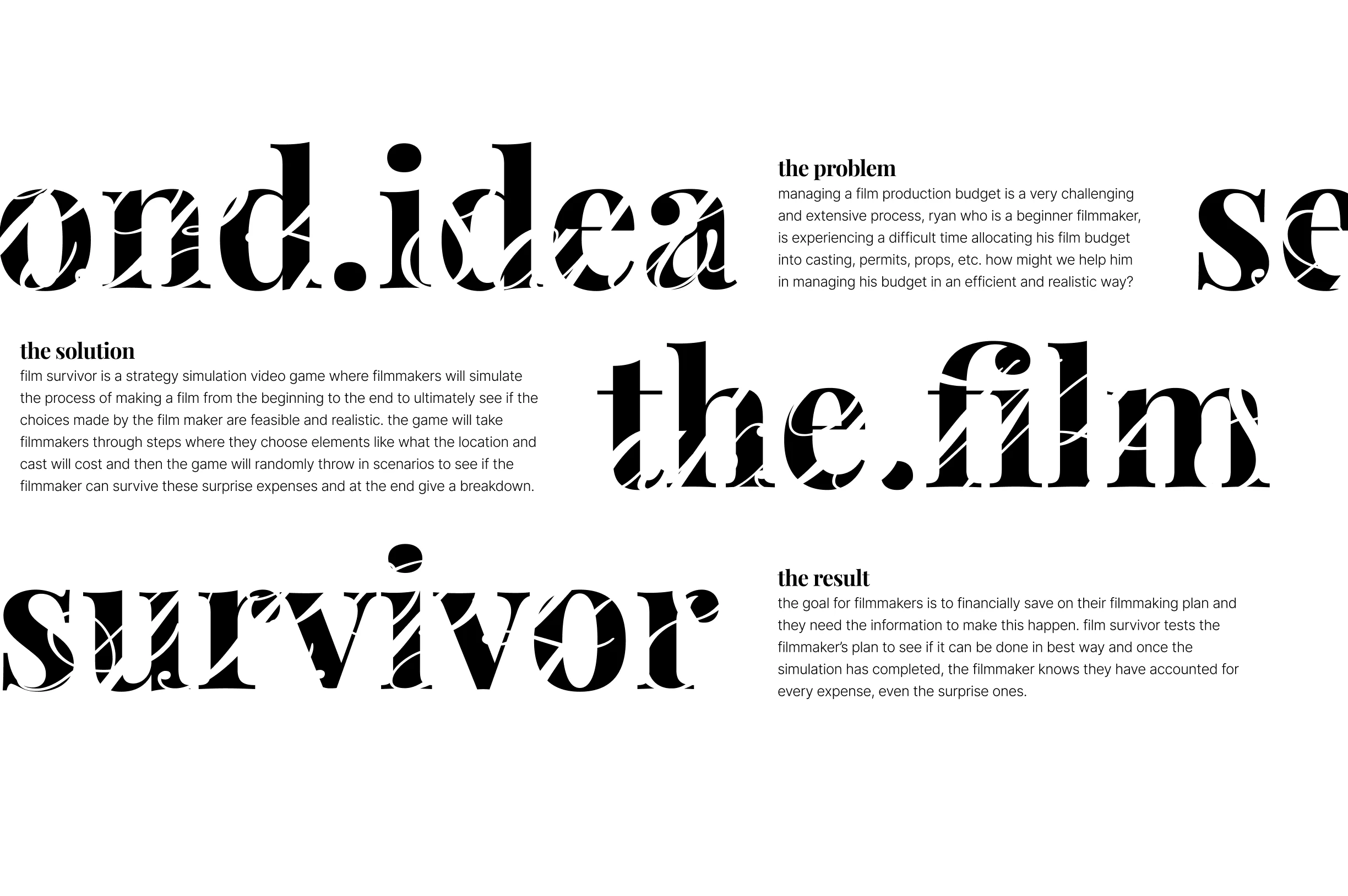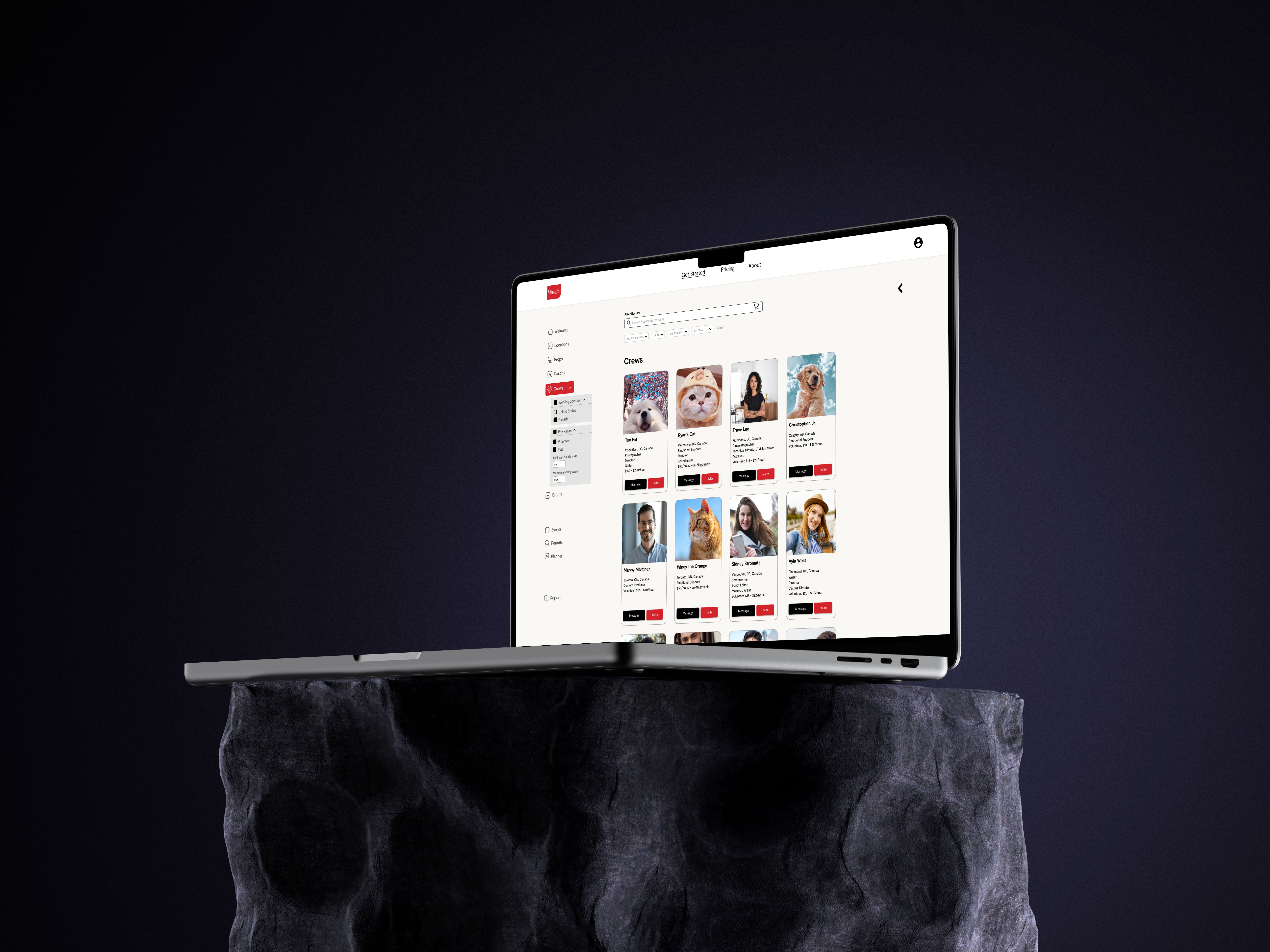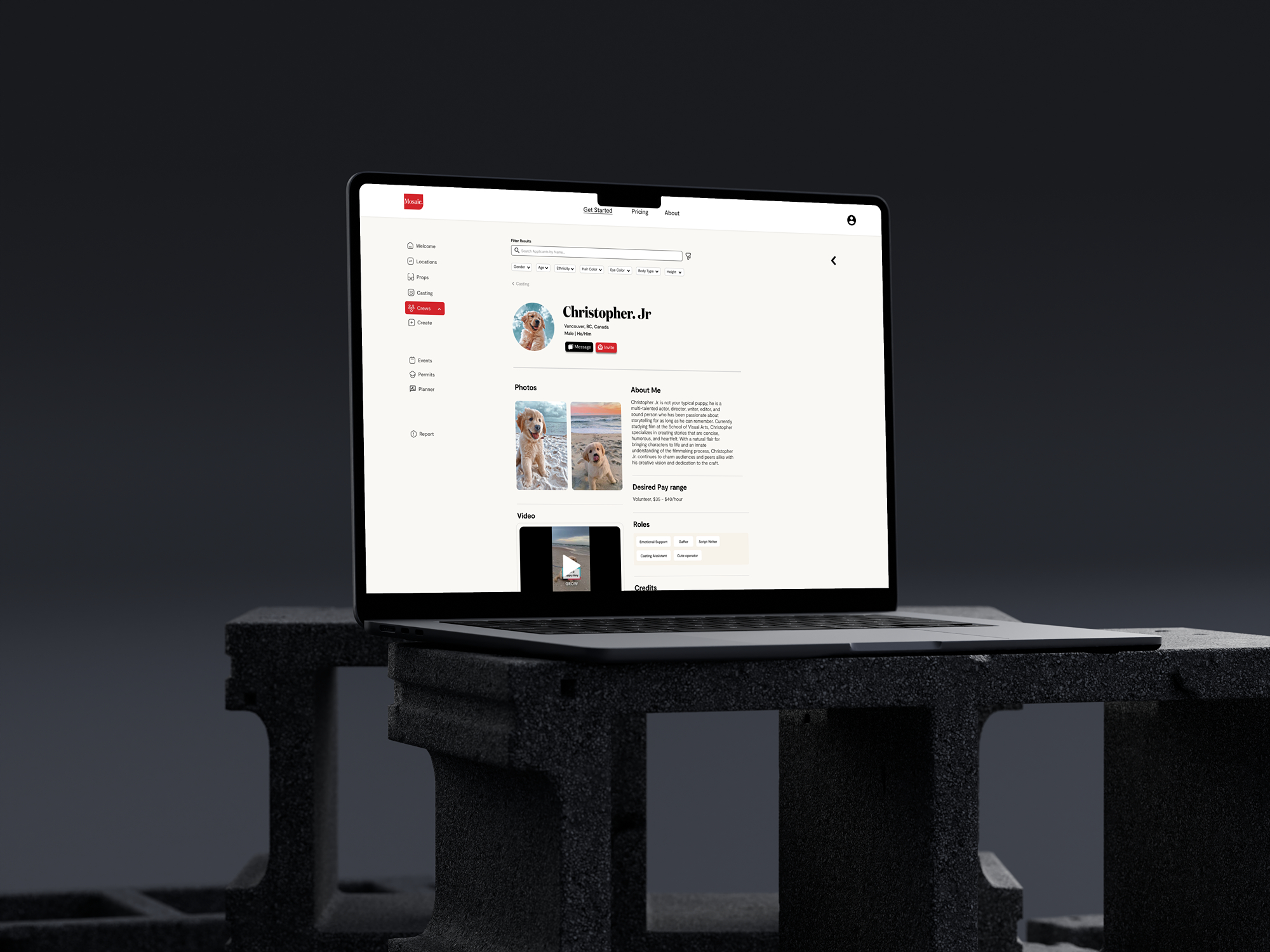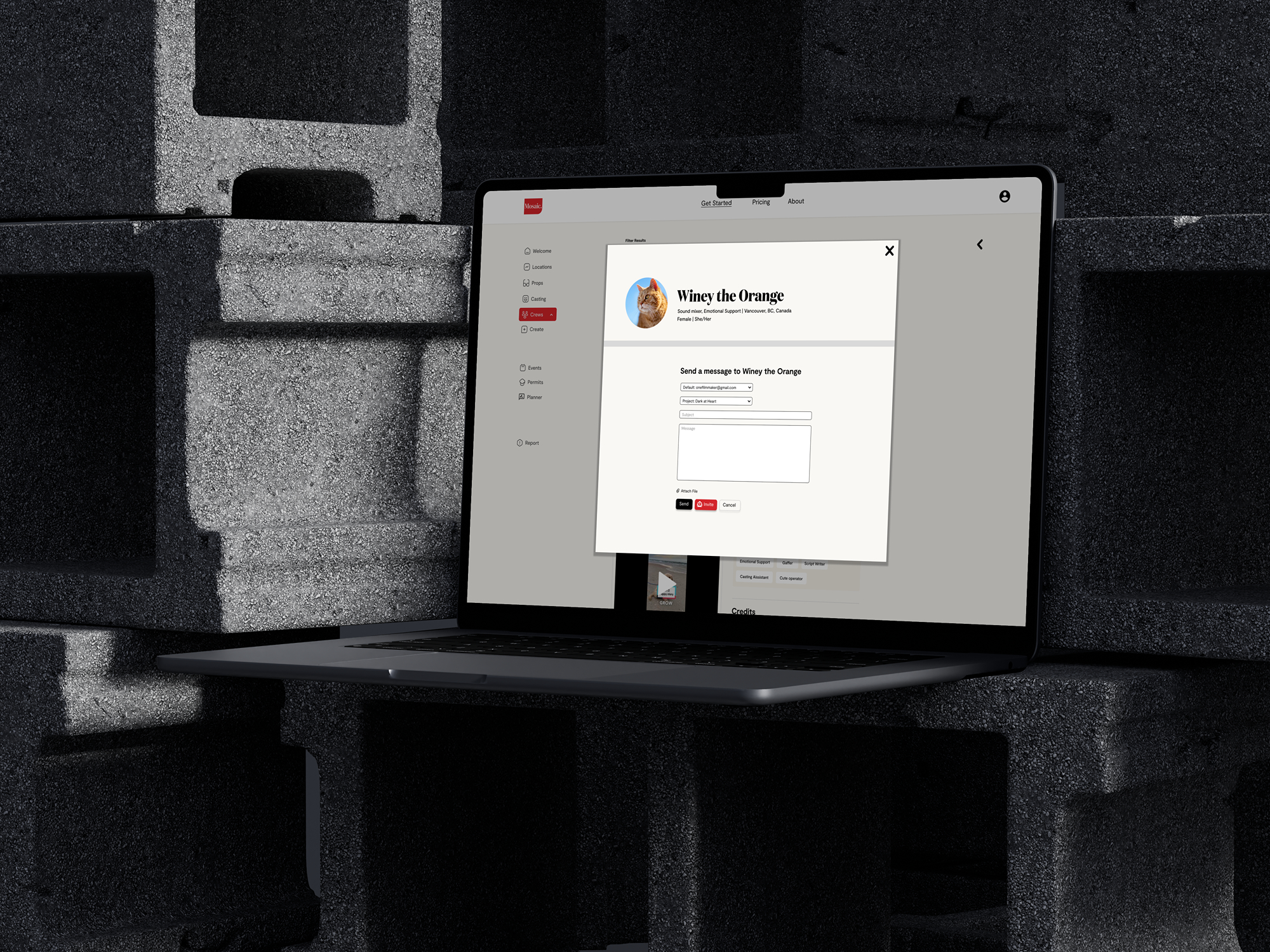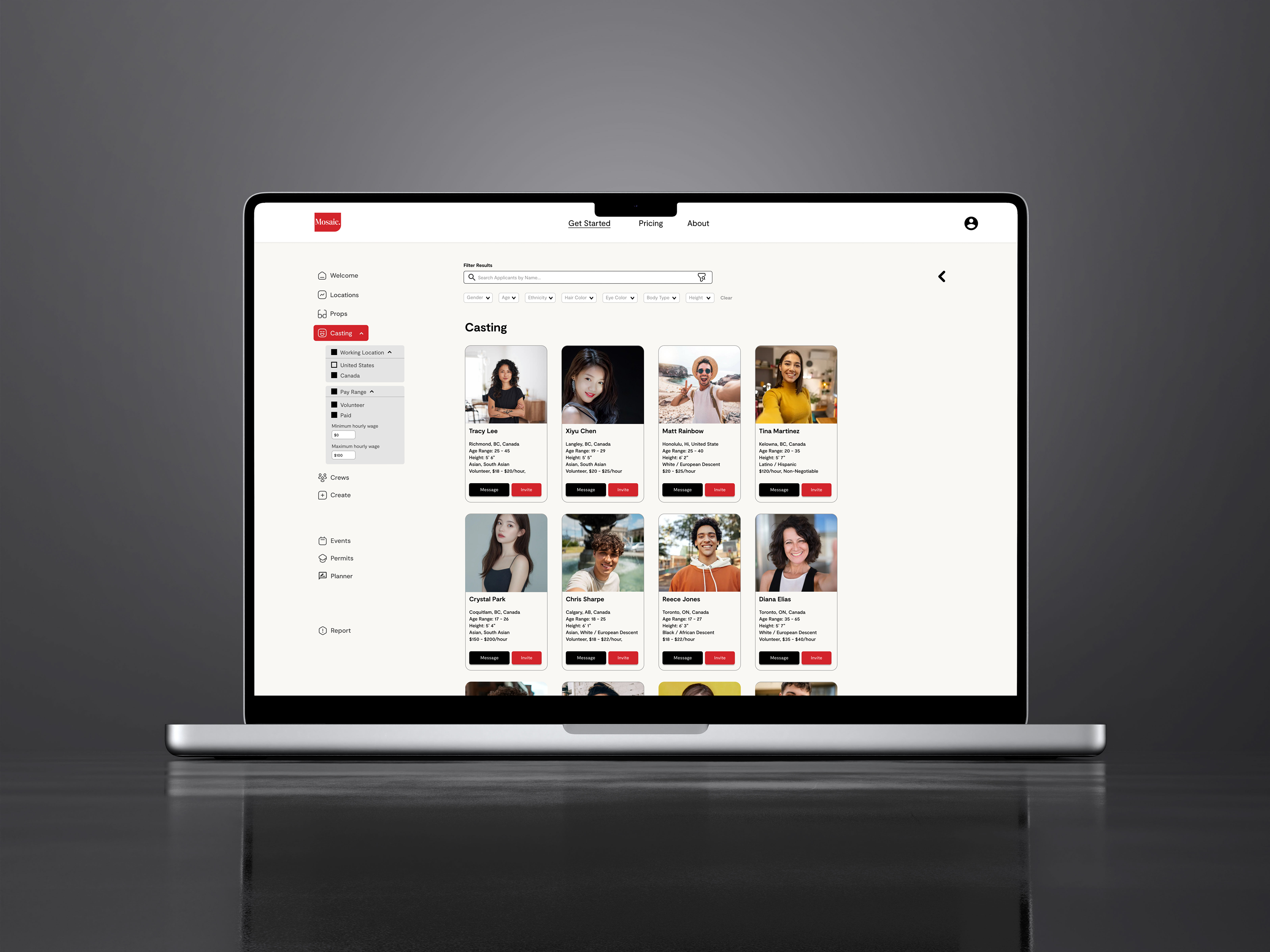
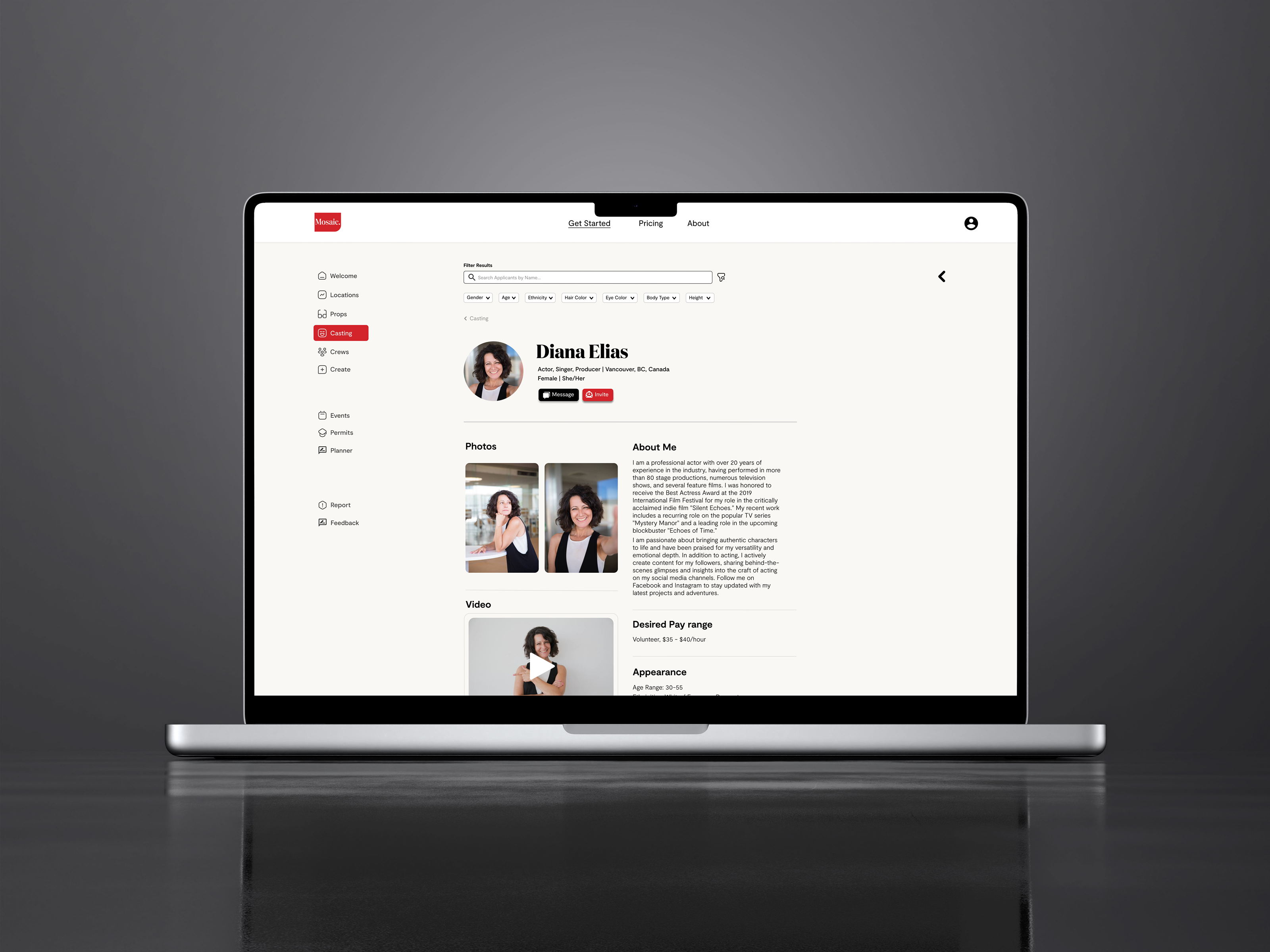
Mosaic's Cast planning page Mockup
Mosaic's casting page was inspired by Backstage and my Eunoia project. It features a vertical selection list on the left and main content in the center, allowing users to easily navigate and see updates in real-time. This helps new filmmakers filter potential casts by criteria like location, pay range, and specific characteristics (e.g., eye color, ethnicity). Inspired by Backstage, users can "message" casts to negotiate before sending scripts, and "invite" them once confirmed, automatically adding them to the budget list for easy management.
By clicking on a desired cast, new filmmakers are taken to the cast's detail page, where they can review information. The page has two columns that display components like photos, bio, demo reels, appearance details, and filming experience. My vision was to let casts arrange these components freely, allowing them to highlight the parts they want filmmakers to notice first.





